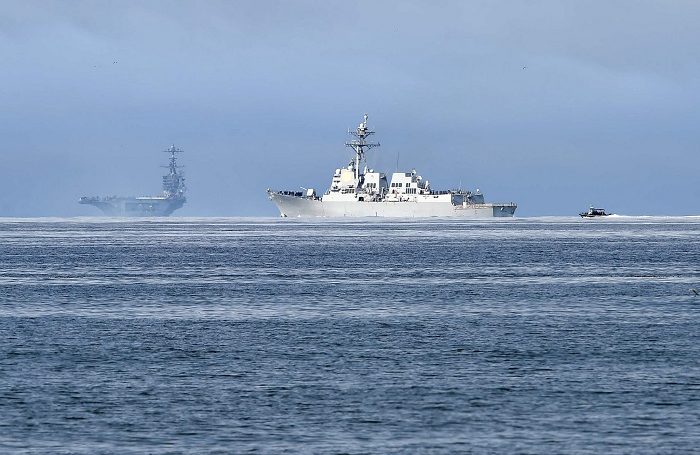
One of the revealing aspects of the deployment of a US destroyer within contested territory in the South China Sea area in late October was the muted response from Beijing. Despite some fiery words in the lead up to the event, when the guided missile destroyer did finally go within 12 nautical miles of the Spratly Islands, Chinese Minister of Foreign Affairs Wang Yi simply told America to `think twice before taking any reckless action.’ There was no further follow up from that.
Words by US Defense Secretary Ash Carter in early November, however, show that if the US has heeded Mr. Wang’s words and thought twice, the conclusion reached is that more of the same is needed. New sailings within the contested waters by US ships are expected soon. What is this meant to achieve and, most importantly, will it work?
The US is certainly setting down some red lines. Domestically there has been heavy criticism directed at the Obama administration for being seen to stand aside while China has been constructing permanent installations on some of the islands and features it currently controls. Defending freedom of navigation has become a priority for the US, both for its own interests but also to demonstrate to its treaty allies in the area, ranging from Japan to South Korea, that it remains fully engaged in the region despite all the distractions from the Middle East and Russia.
There is also a desire to push the Xi leadership in Beijing towards acceptance of compromise, particularly over the route offered by arbitration. Just before the destroyer sailed into the area, the Permanent Court of Arbitration in the Netherlands agreed to proceed with hearing the cases bought to it by the Philippines on the disputed maritime border issues. China stated, in response, that it neither supported nor opposed these measures. The US hopes China will start to take a more positive position.
Destroyers sailing in and out of the region, however, don’t get to where the US almost certainly hopes to reach, which is a sustainable solution. Meetings like the Asia Pacific Economic Co-operation forum in the Philippines in late November do offer at least one venue where almost all the contesting parties can sit down and start envisaging a common framework, and the possibility of a solution that gives. The problem, at the moment, is that everyone seems to be talking about different things – historical claims versus international law claims, with some signing up to pursuing a route through the UN Convention on the Law of the Sea, and some refusing to countenance this.
More muscular US diplomacy in the region might enforce a mood of consensus. But no one expects this to be easy. It would be good if the parties vying against China with claims, like Vietnam, Japan, Philippines and Malaysia in particular – reached a stronger consensus amongst themselves. But that also risks looking like they are ganging up on China unless it is done very carefully.
If the US actions start sobering everyone up in the region, then they will have been useful. If they only serve to inflame passions and resentments, then this might add complexity to an already difficult situation. No one doubts that for China, and the rest of the region, some kind of pragmatic solution, even if it doesn’t deal with the thorny issue of final agreement on sovereignty, is by way and afar the best outcome. The problem is how to achieve that; here deployment of destroyers is a means, not an end.
Further Reading on E-International Relations
- Continuity and Change: China’s Assertiveness in the South China Sea
- Is China Under-Exploiting One Legal Avenue in the South China Sea?
- Contesting American Power: Beijing’s Challenge in South China Sea Disputes
- China’s Strategic Thinking on the Diaoyu/Senkaku Island Dispute
- Neorealism’s Regional Blindspot: The Arctic and South China Sea
- US Policy in the South China Sea Across Three Administrations